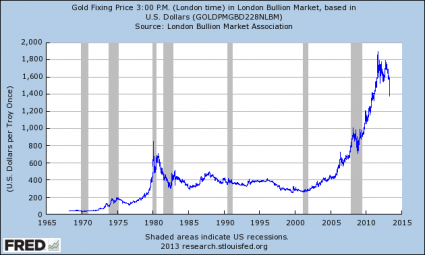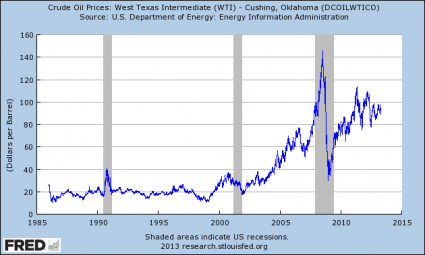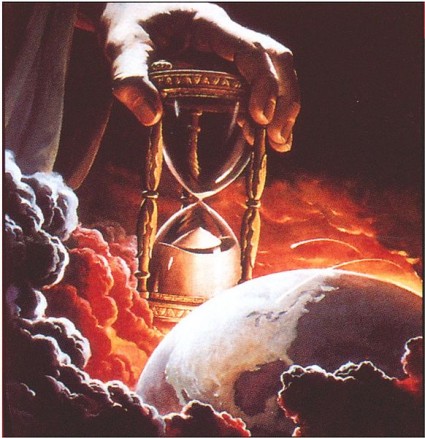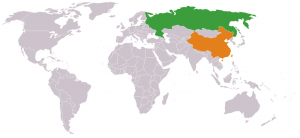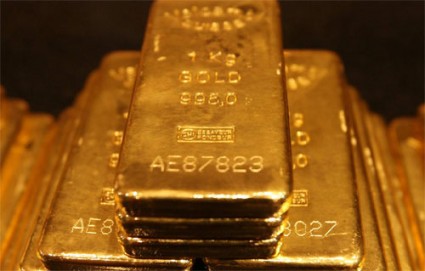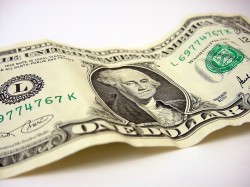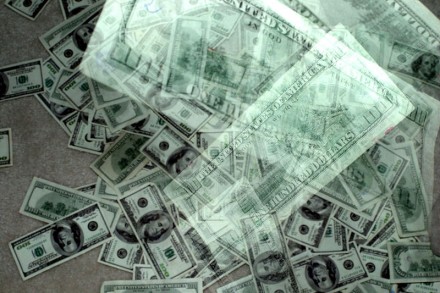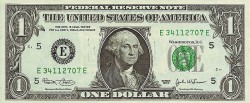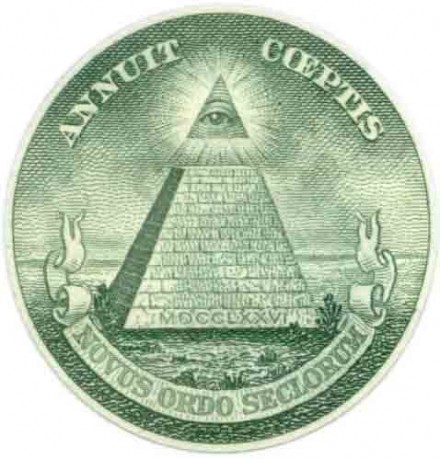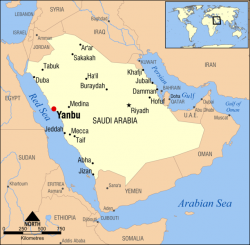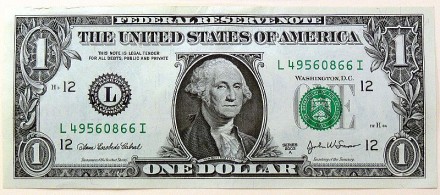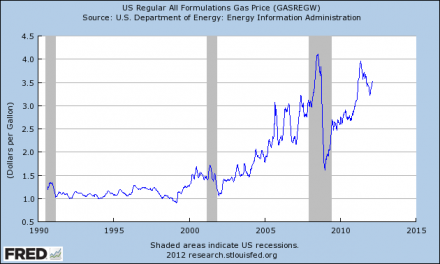 Is the United States about to experience another major economic downturn? Unfortunately, the pattern that is emerging right now is exactly the kind of pattern that you would expect to see just before a major stock market crash and a deep recession. History tells us that when the price of gold crashes, a recession almost always follows. History also tells us that when the price of oil crashes, a recession almost always follows. When both of those things happen, a significant economic downturn is virtually guaranteed. Just remember what happened back in 2008. Gold and oil both started falling rapidly in July, and in the fall we experienced the worst financial crisis that the U.S. had seen since the days of the Great Depression. Well, a similar pattern seems to be happening again. The price of gold has already crashed, and the price of a barrel of WTI crude oil has dropped to $86.37 as I write this. If the price of oil dips below $80 a barrel and stays there, that will be a major red flag. Meanwhile, we have just seen volatility return to the financial markets in a big way. When volatility starts to spike, that is usually a clear sign that stocks are about to go down substantially. So buckle your seatbelts – it looks like things are about to get very, very interesting.
Is the United States about to experience another major economic downturn? Unfortunately, the pattern that is emerging right now is exactly the kind of pattern that you would expect to see just before a major stock market crash and a deep recession. History tells us that when the price of gold crashes, a recession almost always follows. History also tells us that when the price of oil crashes, a recession almost always follows. When both of those things happen, a significant economic downturn is virtually guaranteed. Just remember what happened back in 2008. Gold and oil both started falling rapidly in July, and in the fall we experienced the worst financial crisis that the U.S. had seen since the days of the Great Depression. Well, a similar pattern seems to be happening again. The price of gold has already crashed, and the price of a barrel of WTI crude oil has dropped to $86.37 as I write this. If the price of oil dips below $80 a barrel and stays there, that will be a major red flag. Meanwhile, we have just seen volatility return to the financial markets in a big way. When volatility starts to spike, that is usually a clear sign that stocks are about to go down substantially. So buckle your seatbelts – it looks like things are about to get very, very interesting.
Posted below is a chart that shows what has happened to the price of gold since the late 1960s. As you will notice, whenever the price of gold rises dramatically and then crashes, a recession usually follows. It happened in 1980, it happened in 2008, and it is happening again…
A similar pattern emerges when we look at the price of oil. During each of the last three recessions we have seen a rapid rise in the price of oil followed by a rapid decline in the price of oil…
That is why what is starting to happen to the price of oil is so alarming. On Wednesday, Reuters ran a story with the following headline: “Crude Routed Anew on Relentless Demand Worries“. The price of oil has not “crashed” yet, but it is definitely starting to slip.
As you can see from the chart above, the price of oil has tested the $80 level a couple of times in the past few years. If we get below that resistance and stay there, that will be a clear sign that trouble is ahead.
However, there is always the possibility that the recent “crash” in the price of gold might be a false signal because there is a tremendous amount of evidence emerging that it was an orchestrated event. An absolutely outstanding article by Chris Martenson explained how the big banks had been setting up this “crash” for months…
In February, Credit Suisse ‘predicted’ that the gold market had peaked, SocGen said the end of the gold era was upon us, and recently Goldman Sachs told everyone to short the metal.
While that’s somewhat interesting, you should first know that the largest bullion banks had amassed huge short positions in precious metals by January.
The CFTC rather coyly refers to the bullion banks simply as ‘large traders,’ but everyone knows that these are the bullion banks. What we are seeing in that chart is that out of a range of commodities, the precious metals were the most heavily shorted, by far.
So the timeline here is easy to follow. The bullion banks:
- Amass a huge short position early in the game
- Begin telling everyone to go short (wink, wink) to get things moving along in the right direction by sowing doubt in the minds of the longs
- Begin testing the late night markets for depth by initiating mini raids (that also serve to let experienced traders know that there’s an elephant or two in the room)
- Wait for the right moment and then open the floodgates to dump such an overwhelming amount of paper gold and silver into the market that lower prices are the only possible result
- Close their positions for massive gains and then act as if they had made a really prescient market call
- Await their big bonus checks and wash, rinse, repeat at a later date
While I am almost 100% certain that any decent investigation by the CFTC would reveal that market manipulating ‘dumping’ was happening, I am equally certain that no such investigation will occur. That’s because the point of such a maneuver by the bullion banks is designed to transfer as much wealth from ‘out there’ and towards the center, and the CFTC is there to protect the center’s ‘right’ to do exactly that.
You can read the rest of that article right here.
There are also rumors that George Soros was involved in driving down the price of gold. The following is an excerpt from a recent article by “The Reformed Broker” Joshua Brown…
And over the last week or so, the one rumor I keep hearing from different hedge fund people is that George Soros is currently massively short gold and that he’s making an absolute killing.
Once again, I have no way of knowing if this is true or false.
But enough people are saying it that I thought it worthwhile to at least mention.
And to me, it would make perfect sense:
1. Soros is a macro investor, this is THE macro trade of the year
so far(okay, maybe Japan 1, short gold 2)2. Soros is well-known for numerous market aphorisms and neologisms, one of my faves being “When I see a bubble, I invest.” He was heavily long gold for a time and had done well while simultaneously referring to it publicly as a speculative bubble.
3. He recently reported that he had pretty much exited the trade in gold back in February. In his Q4 filing a few weeks ago, we found out that he had sold down his GLD position by about 55% as of the end of 2012 and had just 600,000 shares remaining. That was the “smartest guy in the room” locking in a profit after a 12 year bull market.
4. Soros also hired away one of the most talented technical analysts out there, John Roque, upon the collapse of Roque’s previous employer, broker-dealer WJB Capital. No one has heard from the formerly media-available Roque since but we can only assume that – as a technician – the very obvious breakdown of gold’s long-term trend was at least discussed. And how else does one trade gold if not by using technicals (supply/demand) – what else is there? Cash flow? Book value?
5. Lastly, the last public interview given by George Soros was to the South China Morning Post on April 4th. He does not mention any trading he’s doing in gold but he does reveal his thoughts on it having been “destroyed as a safe haven”
It is also important to keep in mind that this “crash” in the price of “paper gold” had absolutely nothing to do with the demand for physical gold and silver in the real world. In fact, precious metals retailers have been reporting that they have been selling an “astounding volume” of gold and silver this week.
But that isn’t keeping many in the mainstream media from “dancing on the grave” of gold and silver.
For example, New York Times journalist Paul Krugman seems absolutely ecstatic that gold has crashed. He seems to think that this “crash” is vindication for everything that he has been saying the past couple of years.
In an article entitled “EVERYONE Should Be Thrilled By The Gold Crash“, Business Insider declared that all of us should be really glad that gold has crashed because according to them it is a sign that the economy is getting better and that faith in the financial system has been restored.
Dan Fitzpatrick, the president of StockMarketMentor.com, recently told CNBC that people are “flying out of gold” and “getting into equities”…
“There have been so many reasons, and there remain so many reasons to be in gold,” Fitzpatrick said, noting currency debasement and the fear of inflation. “But the chart is telling you that none of that is happening. Because of that, you’re going to see people just flying out of gold. There’s just no reason to be in it.Traders are scaling out of gold and getting into equities.”
Personally, I feel so sorry for those that are putting their money in the stock market right now. They are getting in just in time for the crash.
As CNBC recently noted, a very ominous “head and shoulders pattern” for the S&P 500 is emerging right now…
A scary head-and-shoulders pattern could be building in the S&P 500, and this negative chart formation would be created if the market stalls just above current levels.
“It’s developing and it’s developing fast,” said Scott Redler of T3Live.com on Wednesday morning.
Even worse, volatility has returned to Wall Street in a huge way. This is usually a sign that a significant downturn is on the way…
Call options buying recently hit a three-year high for the CBOE’s Volatility Index, a popular measure of market fear that usually moves in the opposite direction of the Standard & Poor’s 500 stock index.
A call buy, which gives the owner the option to purchase the security at a certain price, implies a belief that the VIX is likely to go higher, which usually is an ominous sign for stocks.
“We saw a huge spike in call buying on the VIX, the most in a while,” said Ryan Detrick, senior analyst at Schaeffer’s Investment Research. “That’s not what you want to hear (because it usually happens) right before a big pullback.”
The last time call options activity hit this level, on Jan. 13, 2010, it preceded a 9 percent stock market drop that happened over just four weeks, triggered in large part by worries over the ongoing European debt crisis.
And according to Richard Russell, the “smart money” has already been very busy dumping consumer stocks…
What do billionaires Warren Buffet, John Paulson, and George Soros know that you and I don’t know? I don’t have the answer, but I do know what these billionaires are doing. They, all three, are selling consumer-oriented stocks. Buffett has been a cheerleader for US stocks all along.
But in the latest filing, Buffett has been drastically cutting back on his exposure to consumer stocks. Berkshire sold roughly 19 million shares of Johnson and Johnson. Berkshire has reduced his overall stake in consumer product stocks by 21%, including Kraft and Procter and Gamble. He has also cleared out his entire position in Intel. He has sold 10,000 shares of GM and 597,000 shares of IBM.
Fellow billionaire John Paulson dumped 14 million shares of JP Morgan and dumped his entire position in Family Dollar and consumer goods maker Sara Lee. To wrap up the trio of billionaires, George Soros sold nearly all his bank stocks including JP Morgan, Citigroup and Goldman Sachs. So I don’t know exactly what the billionaires are thinking, but I do see what they’re doing — they are avoiding consumer stocks and building up cash.
… the billionaires are thinking that consumption is heading down and that America’s consumers are close to going on strike.
So what are all of those billionaires preparing for?
What do they know that we don’t know?
I don’t know about you, but when I start putting all of the pieces that I have just discussed together, it paints a rather ominous picture for the months ahead.
At some point, there will be another major stock market crash. When it happens, we will likely see even worse chaos than we saw back in 2008. Major financial institutions will fail, the credit markets will freeze up, economic activity will grind to a standstill and millions of Americans will lose their jobs.
I sincerely hope that we still have at least a few more months before that happens. But right now things are moving very rapidly and it is becoming increasingly clear that time is running out.
